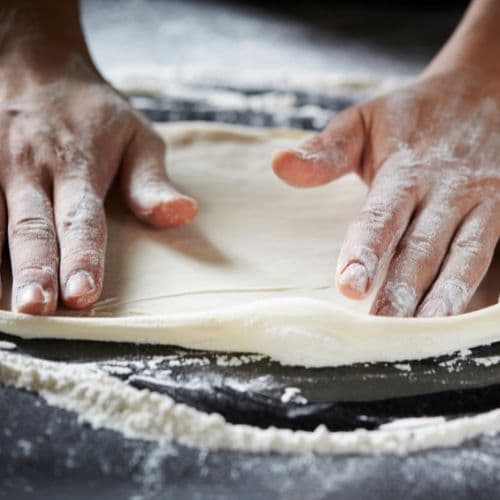
See how flour and water transform into an elastic network that gives bread its structure. This simple test will become your most reliable tool for knowing when dough is properly developed.
You'll Need#
200g bread flour
130g water
Mixing bowl
Clean surface for kneading
Quick Steps#
1. Mix & Rest#
Mix flour and water until no dry spots remain. Cover and rest 20 minutes.
2. Knead & Test Cycle#
Knead dough for 2 minutes
Pinch off a small piece
Gently stretch it between your fingers
Check if light passes through
3. Observe Changes#
Repeat the knead-and-test cycle, noting how the dough changes:
First 2 minutes: Tears easily, doesn't stretch
Around 4-6 minutes: Stretches somewhat but tears
Around 8-10 minutes: Stretches into a translucent "windowpane"
Success Looks Like#
When your dough can stretch thin enough to see light through without tearing, you've successfully developed the gluten!
Why It Works#
When you knead dough, you're helping wheat proteins (glutenin and gliadin) connect into an elastic network. The windowpane test visually confirms this network has formed properly.
Quick Tips#
If dough is too sticky to handle, lightly wet your hands instead of adding flour
Let overly tight dough rest 5 minutes before testing again
Practice this test with every dough you make until it becomes second nature
Apply This To Your Baking#
Use this test with the upcoming Rustic White Boule to ensure perfect gluten development before fermentation begins.